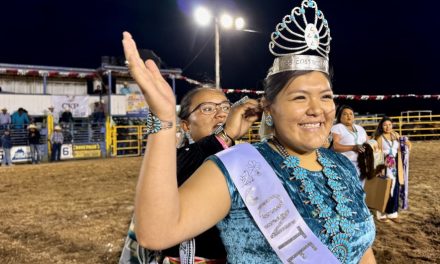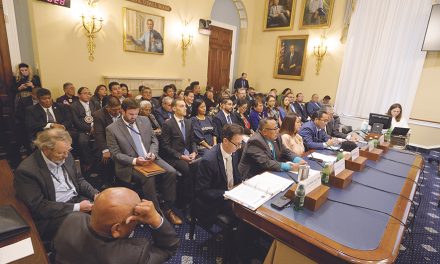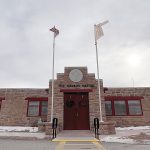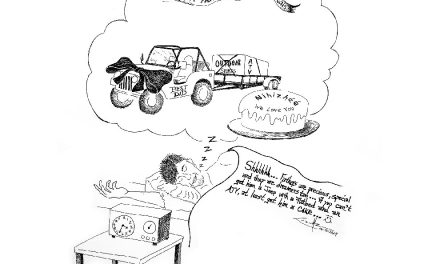
50 Years Ago | Tribe juggles requests to film movies on rez
A representative of the Malpaso Film Company stopped by the Navajo Times and talked to Chet MacRorie, the paper’s managing editor, trying to find out the process to allow filming on the Navajo Reservation.
The company, which had been set up a few years ago by Clint Eastwood, was looking at producing several westerns over the next five or six years and was looking for areas in the country that could be used as sites for filming and several people had suggested looking at Navajo lands.
I happened to be in the Times office at the time and MacRorie and I walked about a block to the Window Rock Motor Inn to talk to the rep.
He told us that he was a big western movie fan and knew that a number of films had been made in the Monument Valley area over the past four decades and he was wondering what process his company had to take to get permission to shoot there and in other reservation locations.
Both MacRorie and I said we had no idea. As far as we knew, no movies so far had requested permission to film here during the 16 months Peter MacDonald had been chairman of the tribe. I knew that three or four had been made during the Nakai administration but as far as I knew, the arrangements and permission came from the chapter where the filming was done.
There were 102 chapters at that time and we explained how the chapter system worked, adding that if the company promised to pay a fee and hire chapter members as extras, he probably would not have a problem. I also suggested he talk to the chairman’s office and ask if there was a tribal process he had to follow.
A couple of days later, I stopped by MacDonald’s office to get an update on the land dispute with the Hopis and I mentioned the visit by the official from the Malpaso company. MacDonald said he had heard the man was trying to meet with him and he had asked one of his aides to see if there was a process in place to handle this kind of situation and if there wasn’t, the matter should be turned over to the tribe’s general counsel, George Vlassis, to set up a procedure.
A few days later, I saw Vlassis and asked what he had discovered.
“It’s a mess,” he said. “It seems like it was handled case by case so no one seems to be overseeing the company to make sure they don’t damage the land or be sensitive to tribal customs.”
It seems that during Nakai’s administration, he would appoint one of his aides to act as a liaison between the film company and the tribe. This turned out to be lucrative to the aide since the film company paid him a daily fee – usually $200 or $250 a day – to help take care of the paperwork.
But it seemed that paying the liaison was only the tip of the iceberg since any time a film company showed up, everyone had their hands out to be paid. This included the chapter president as well as the Council delegate.
The big problem, however, he said, centered on who had customary use of the land.
Vlassis said it appeared the film company had to get permission of the family who had customary use of the land. It appeared it was not unusual for four or five families to claim customary use. They all had to be paid a fee because of the company’s insurance, which required that the land user be compensated in case of a dispute after the shooting ended.
For the company had to employ extras from the area, there was really no set way to do that as well, although the tribal liaison was expected to set up a procedure so that those who were not hired would not blame the film company.
Vlassis said he could see why film companies may be reluctant to film on the reservation because of the confused approval process.
Evidently, he began working to create a tribal office to handle these kinds of requests because when a new tribal budget was prepared, funds were provided to set up an office of film and media.
The new department would be directed by Virgil Wyaco, a big MacDonald supporter. A film and media commission was set up to deal with any problems that came up and to set up regulations that companies wanting to film on the reservation would follow.
The new office was also given the responsibility of setting up fees that commercial photographers had to pay to come onto the reservation as well as companies that wanted to film commercials.
MacDonald wanted to promote filming and commercials on tribal sites because it was good publicity for the reservation. It brought in some money through fees but the money only paid for the department’s operation.
Wyaco, who would head the department for a good 15 or 20 years, said that the main problem the office faced was making sure people who wanted to film or take commercial photos knew they had to get permission.
They also had problems occasionally making sure that the film producers and photographers did not use sacred places on the reservation.
For example, the office would occasionally see requests to film on top of towering sandstone rocks. The tribe prohibits climbing on the rocks as well as filming on top but it would get requests to put an object, such as a car, on top of one of them for advertising.
He said the department also turned down a request from Playboy magazine to shoot a photo spread on the reservation.
As for Malpaso, the company had wanted film a scene for “High Plains Drifter” that summer but decided to go somewhere else.









 Highway 264,
Highway 264, I-40, WB @ Winslow
I-40, WB @ Winslow